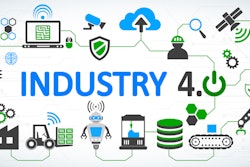
Corporate net zero commitments are gaining momentum. Thirty-one percent of the largest publicly traded companies in the world by revenue have pledged to go net zero.
Critical to achieving these aspirations is getting a handle on Scope 3 emissions. In fact, data shows that 50-80% of a company’s sustainability impact lies in its supply chain. Procurement teams manage relationships with suppliers and can therefore play a significant role in helping the organization reduce its carbon footprint through its purchasing strategy. This makes procurement teams a key enabler for businesses looking to make tangible progress toward their net zero goals.
Artificial intelligence (AI) and automation are strategic levers for achieving emissions reduction targets. As procurement practitioners help lead net zero initiatives internally, tapping into the power of these technologies can bring new insights and capacity that help them keep their organizations on the road to success.
Three ways to start now
There are three immediate ways that you can leverage technology to help your organizations navigate to net zero.
1. Increase visibility into the supply base
Most companies don’t have a firm grasp of the impact their supply chain operations have on the environment. Poor data quality is often a leading contributing factor to this lack of visibility. Data is key for understanding which suppliers’ environmental footprints are inhibiting progress to net zero goals, but a staggering 81% of companies say they are not completely confident in their supplier data. The two main complaints: the data is not enriched with the verified information buyers need, and suppliers don’t always keep their data fully updated in self-service portals.
AI and machine learning must be deployed to address this critical data challenge. AI algorithms can automatically update supplier profiles and autonomously enrich the data with key information about suppliers’ environmental and waste management practices, diversity status, compliance, certifications, and more. You can see which suppliers are truly green and where you need to switch out supply sources to lower Scope 3 emissions.
A centralized and 360-degree view of the supply base is essential for achieving your net zero goals. Your technology ecosystem should put all relevant information, including supplier sustainability and carbon ratings, supplier risk intelligence, carbon reporting and analysis tools, emissions ‘hotspot’ mapping, and more, at your fingertips. The ability to seamlessly plug into specialized technologies and intelligence from a single platform is critical for making the most informed, strategic, and confident decisions to reduce your overall footprint.
2. Find the best suppliers fast with AI
It takes many procurement teams three months on average to complete a single supplier search. Even after countless hours of work, the chosen supplier might not even be the best fit for the company’s unique needs and objectives. Given the urgency to hit net zero targets, there’s no time to waste. Success hinges on procurement’s speed in identifying new suppliers that will have the biggest impact on the organization’s emissions reduction goals.
Procurement teams that tap into the power of AI can drive this level of efficiency. The algorithms look across a global network of suppliers, glean deep insights into their capabilities from their profiles, and recommend the suppliers that tightly match your specific needs. These smart-match recommendations consider ESG objectives in addition to price, service levels, risk, historical performance ratings, and more, so you can meet your core buying criteria while prioritizing supply sources that will help drive your organization’s net zero goals.
3. Streamline core processes with autonomous technology
Opening up capacity across the procurement team is paramount for hitting net zero targets. The function’s critical processes – contract management, supplier onboarding, creating requests for proposals (RFPs), managing invoicing and payments, and more – are each very resource- and time-intensive. The RFP process alone can take weeks, months, or even years to complete.
For procurement to help organizations achieve net zero, they will need time back in their day to think strategically and focus on higher-level work. AI and machine learning can autonomously execute many of the repetitive, behind-the-scenes tasks required of procurement teams. The intelligent tools can also guide teams through best practice workflows and the steps to complete specific tasks. AI can identify where common process bottlenecks occur and recommend the action paths that are the most efficient. Procurement teams that invest in this level of automation will be able to re-allocate their time and energy to driving forward strategic initiatives such as net zero goals and broader ESG initiatives.
While procurement is in the driver’s seat, the function can’t reach net zero alone. Achieving ESG and net zero initiatives is an enterprise-wide effort that requires buy in and engagement from across the business. Automation frees procurement up to focus on establishing data transparency and other efforts that drive cross-departmental collaboration.
Begin your journey
We saw procurement teams significantly step up with great fortitude to lead their organizations through supply disruptions and ongoing economic uncertainty over the past few years. Now, there’s another urgent and strategic imperative that requires their unique skillsets and attention.
Technology innovation is taking off to help procurement professionals as they guide their organizations on the road to net zero. Now is the time to make the case internally for the tools and resources you need to manage your supply chain strategically in accordance with emissions reduction targets.



















